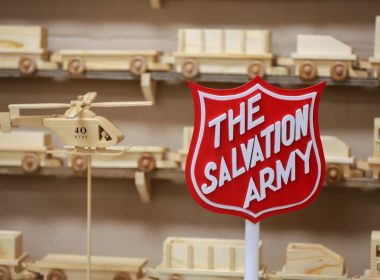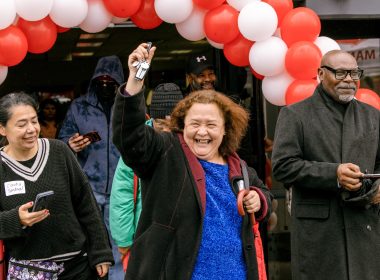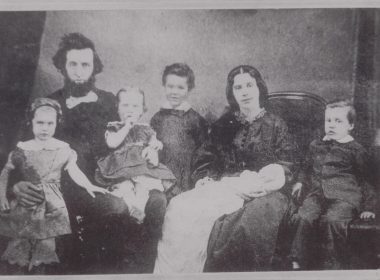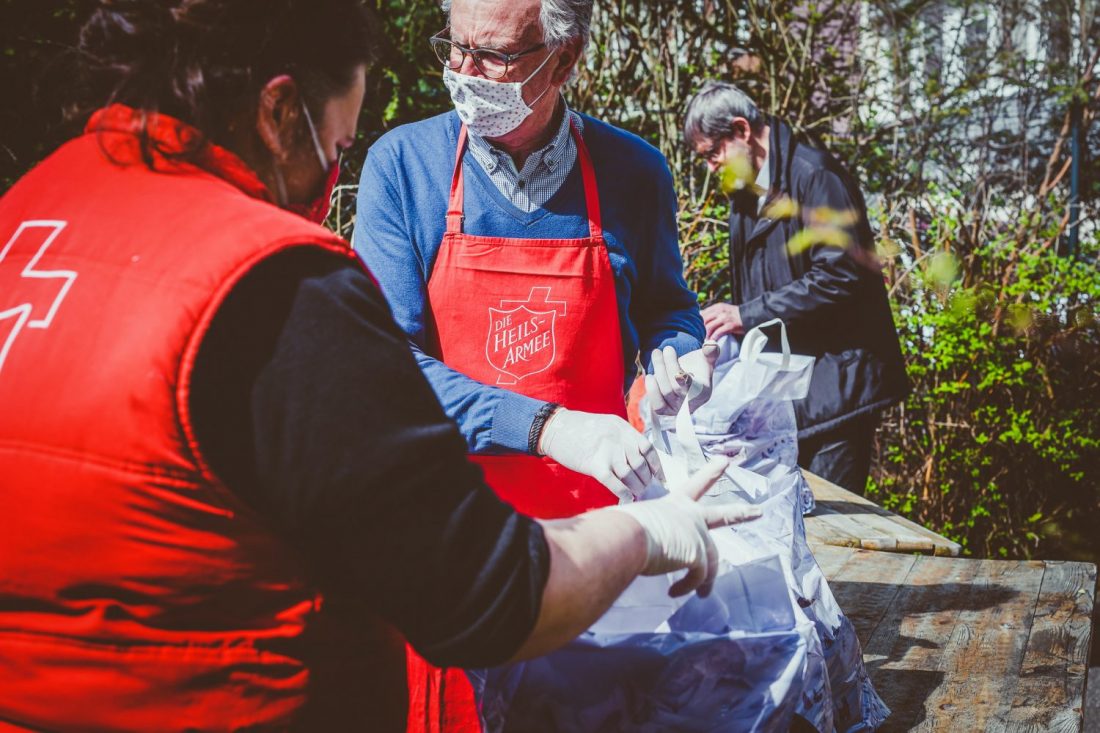Salvationists Called to Minister

by Frances Dingman –
The wreck of the Titanic on her maiden voyage was the greatest shipping casualty the world had ever known. This was still another calling for the Salvationists in the United States and England to minister to those in need
Four hours after colliding with an iceberg late on April 14, 1912, the mighty, “unsinkable” ship went to the bottom of the Atlantic with all who remained aboard her. Shock waves from this calamity reached around the world, especially affecting families in Britain and the United States who lost a total of 1,344 loved ones.
Regrettably, the ship had not carried enough lifeboats to hold all the passengers. True to the tradition of the sea, the rule was “women and children first,” and the Captain stayed with his ship. The crew, except those needed to handle the lifeboats, remained at their posts, and the ship’s orchestra kept playing.
The heroic wireless operator signaled until the last minute. Only the liner Carpathia, which had serenely carried Salvationists to the International Congress in 1904, could respond in time to rescue the freezing passengers from their boats and rafts.
City of Sorrow
The city of Southampton mourned the loss of hundreds of men who were on duty on the ship.
To the firemen, greasers, trimmers, and third-class galley staff the sailing of the great ship had been a godsend, acclaimed as the beginning of better and brighter days. The coal strike had kept a big fleet of vessels in harbor, and in consequence, thousands of homes in the city had felt the pinch of poverty until the Titanic had offered jobs. There was mourning everywhere in the city when the terrible news came.

children into a boat.
Night and day, a crowd of pale, anxious faces had been waiting outside the offices of the White Star Shipping company, in the vain hope of hearing news of their loved ones. Salvation Army officers wherever possible were comforting the grief-stricken. A number of the ship’s crew had been residents at the Army’s Home for Working-men. Survivors of three or four victims who had been insured with The Salvation Army Assurance Society were paid promptly.
Army friend perishes
As a passenger on the Titanic, W. T. Stead was on his way to attend the convention of the “Man and Religion Forward Movement” that had been operating in America for some months with the object of inducing businessmen to take an active part in religious activities.
The former editor of the liberal paper, Pall Mall Gazette, Stead had an abiding interest in any cause to help humanity. He had contact with most of the notables of the time, and his acquaintance with crowned heads was unique. He was also familiar with The Salvation Army, and lent his hand on behalf of women and children on the streets of London. Appalled that the age of consent was only 13 in Britain, he took part in a “sting.” They proved to Parliament what was happening by following a volunteer young woman through to the brothels. Though officials had been notified ahead of time, and no harm came to the girl, Bramwell Booth was indicted and Stead actually did prison time, afterwards a source of pride to him. As a result, Parliament raised the age of consent to 16, a major victory at that time.
The lifelong bachelor collaborated with William Booth in writing his famed plan for dealing with the submerged tenth of society, “Darkest England and the Way Out.”

By the account of fellow passengers, Stead was last seen characteristically helping women and children into lifeboats without regard for his own life.
Salvationists minister
As soon as newspapers flashed the word, relief efforts were organized in New York City by the Women’s Relief Committee, the American Red Cross, and of course The Salvation Army. Food, clothing, shelter, transportation, money, customs regulations, consolation, prayer and ministering to the 705 survivors’ needs were among services shared by the three groups.
When the Carpathia wired her intention to return to New York with the survivors, Cunard’s Pier 54 was readied to receive them. Barricades were erected in anticipation of the large crowds expected to fill the streets around the pier.
National Commander Evangeline Booth offered Mayor Gaynor the Army’s full cooperation, listing accommodations for survivors.
As it pulled into the dock, the Carpathia was surrounded by tugboats, and the scene was illuminated by photographers’ magnesium flashes.
Commander Booth, Chief Secretary Major and Mrs. Cowen, Captain George Darby (staff bandmaster) and other members of the national staff made their way through police lines with official credentials.

Booth described her impressions: “Mind cannot imagine…the deep pathos of the heart-rendering meetings that took place between relatives and friends. A piercing shriek rent the air…anguish…weeping hysterically…’I thought I’d never see you again’…’Don’t let them blame me for not saving the children! I tried to but I couldn’t.'” The hearts of the Commander, as well as the rest of the Salvation Army contingent, were cut to the quick.
Salvationists on board
Third class passenger Rosa Abbott, a British Salvationist in uniform, was traveling with her two boys. On shipboard, she ministered to passengers while her boys helped people into boats. She, too, was helped into a boat by one of the sons. Then, according to the War Cry, Mrs. Abbott’s “two bright boys had to take their stand with the men on the doomed ship while the women were piled into the boats.” Rescued, she recovered, though suffering from grief, shock and exposure.
Another Salvationist was Elizabeth Nye, age 29, the daughter of a Salvation Army bandsman from Folkstone. Her husband and child recently had died and she was returning to New York to her job at the Army’s Uniform Department. At the dock she was greeted with a kiss on the cheek from the Commander. Captain Darby’s face was the first she saw when woke up after fainting beside the pier. She excused herself and went back on board for her canary bird, which she had somehow saved in spite of losing everything else. The poor little chap was a bit bedraggled, but had not forgotten how to chirp.
After her rescue she entered The Salvation Army’s training school and the next year was married to Darby. Colonel and Mrs. George Darby served their entire distinguished careers in the New York City area.
Booth administered to many on the pier that night with her womanly tact and consolation for those who stood sadly in need of it. She and her “soldiers” stayed at the dock until after midnight, dispensing tea and sandwiches for workers there.
Lessons learned
As to the lessons of the disaster, the nations most closely affected, Britain and America, were stabbed into insisting on something being done to prevent ships in future going to sea with such inadequate lifesaving equipment.
But above hard-won lessons of this kind there rings through the world another message. It is that supremely important word of the uncertainty of life, the insecurity of earthly possessions in the presence of death, and the nearness of the eternal world.
Sources: April 17, 1912 War Cry; other assistance from the International Heritage Center and the U.S. National Archives












